Interventional radiology offers amazing, minimally invasive treatments. But what exactly does it involve?
Interventional radiology (IR) encompasses a wide range of minimally invasive procedures that use imaging guidance to diagnose and treat various medical conditions. These procedures offer alternatives to traditional surgery.
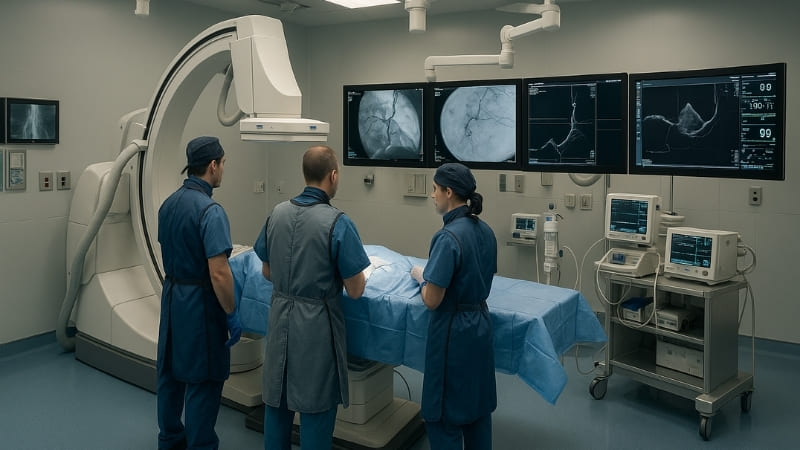
What are the types of interventional radiology? Exploring the Range of Treatments
I’m always amazed by the variety of IR procedures. It seems like there’s a solution for almost every problem.
Interventional radiology includes a diverse array of procedures, such as angioplasty, embolization, thrombolysis, and biopsies. These techniques target specific areas of the body to diagnose and treat conditions with minimal disruption to surrounding tissues.
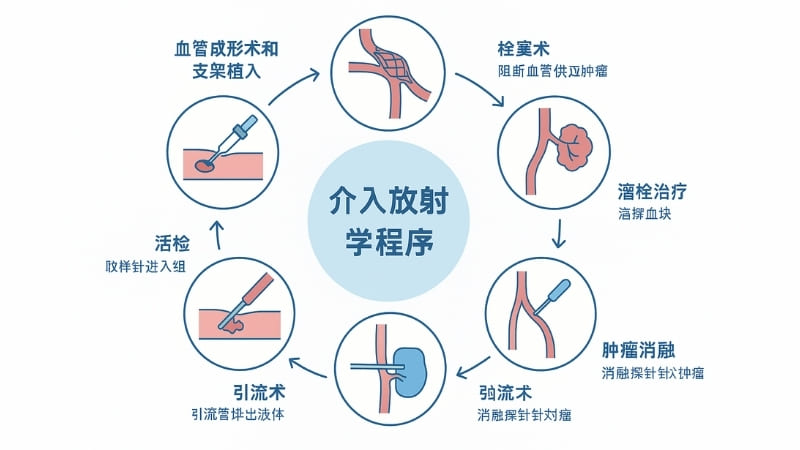
-
Endovascular Stent Placement: Stents are inserted into narrowed or blocked blood vessels (like coronary and lower limb arteries) via catheters to expand the vessels, restore blood flow, and relieve ischemic symptoms.
-
Percutaneous Transhepatic Cholangial Drainage (PTCD): Under imaging guidance, a needle pierces dilated bile ducts through the skin. A drainage tube is inserted to facilitate the outflow of bile obstructed by tumors or stones, reducing jaundice.
-
Uterine Artery Embolization (UAE): The uterine arteries are embolized to reduce blood supply to fibroids or adenomyosis lesions, causing them to atrophy. This treats uterine fibroids and adenomyosis, relieving symptoms while preserving the uterus.
-
Transcatheter Arterial Chemoembolization (TACE): Chemotherapeutic drugs are mixed with embolic agents and injected into tumor-supplying arteries via catheters. This directly kills tumor cells and cuts off their blood supply, a common non-surgical treatment for liver cancer.
What is the most common interventional radiology procedure? A Frequent Solution
I’ve often wondered which IR procedure is most common. Is it related to heart health, perhaps?
[Angiography](https://reshinmonitors.com/medical-grade-monitor-applications/application-in-angiography/ “Angiography”), which involves imaging blood vessels to diagnose blockages or abnormalities, is one of the most common interventional radiology procedures. This helps guide treatments like angioplasty and stent placement.
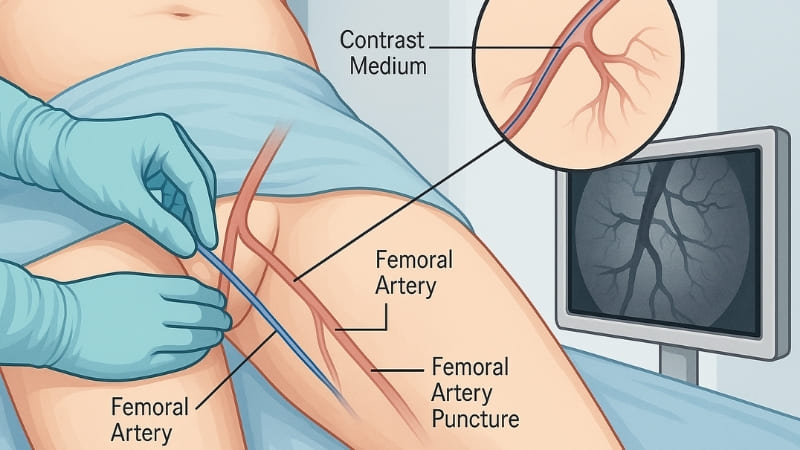
-
Diagnosis and Treatment: Angiography is used to diagnose various vascular conditions, such as peripheral artery disease, aneurysms, and blood clots. It also guides interventional treatments like angioplasty and stent placement to restore blood flow.
-
Minimally Invasive: Angiography is performed through a small incision, minimizing the risk of complications and reducing recovery time compared to traditional surgery.
-
Real-Time Imaging: Angiography uses real-time imaging techniques, such as fluoroscopy, to visualize the blood vessels and guide the interventional procedure.
-
Versatile Application: Angiography can be used to evaluate blood vessels in various parts of the body, including the heart, brain, kidneys, and limbs.
What type of surgeries do interventional radiologists do? Beyond Traditional Surgery
So, IR isn’t exactly surgery, but it achieves similar results. What kinds of problems can interventional radiologists solve?
Interventional radiologists do not perform traditional open surgeries. Instead, they use minimally invasive techniques to treat a variety of conditions, including vascular disease, cancer, and pain management. These procedures often involve catheters, needles, and imaging guidance.
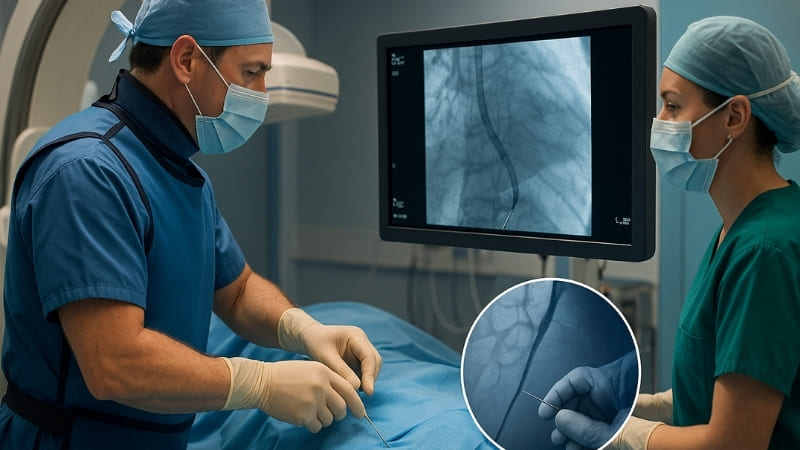
- Vascular Procedures: Interventional radiologists perform angioplasty, stenting, and thrombolysis to treat vascular diseases such as peripheral artery disease and deep vein thrombosis.
- Oncologic Procedures: They perform chemoembolization, radiofrequency ablation, and cryoablation to treat various types of cancer.
- Pain Management: Interventional radiologists perform nerve blocks, epidural injections, and vertebroplasty to manage chronic pain conditions.
- Other Procedures: They also perform biopsies, drainages, and embolizations to treat a wide range of other medical conditions.
What is the success rate of interventional radiology? Evaluating Outcomes
Success is the ultimate measure. How successful are these IR procedures compared to traditional surgery?
The success rate of interventional radiology varies depending on the specific procedure and the patient’s condition. However, many IR procedures have high success rates and offer significant benefits, such as reduced pain, shorter recovery times, and fewer complications, compared to traditional surgery.
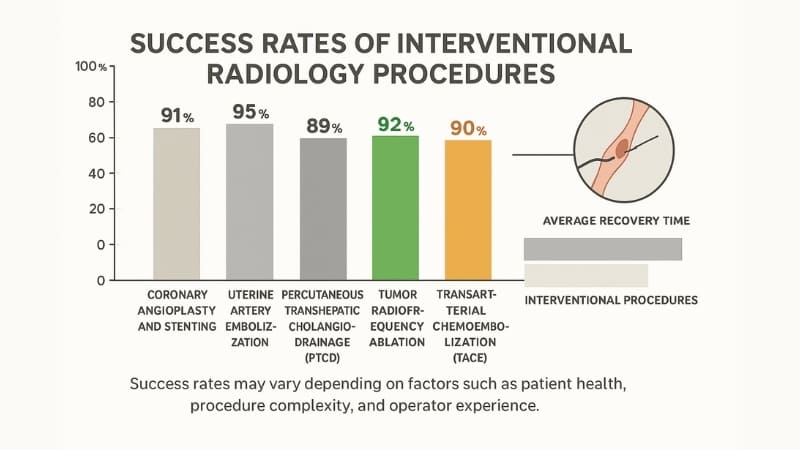
- Factors Affecting Success: The success rate of IR procedures can be influenced by factors such as the patient’s age, overall health, and the severity of the condition being treated.
- Published Studies: Numerous studies have demonstrated the effectiveness of IR procedures in treating various medical conditions.
- Patient Satisfaction: Many patients report high levels of satisfaction with IR procedures due to the minimally invasive nature and the quick recovery times.
- Continuous Improvement: The field of interventional radiology is constantly evolving, with new techniques and technologies being developed to improve success rates and patient outcomes.
Conclusion
Interventional radiology offers a wide array of minimally invasive procedures for diagnosing and treating various medical conditions. With high success rates and numerous benefits, IR is transforming healthcare and providing patients with less invasive alternatives to traditional surgery.


